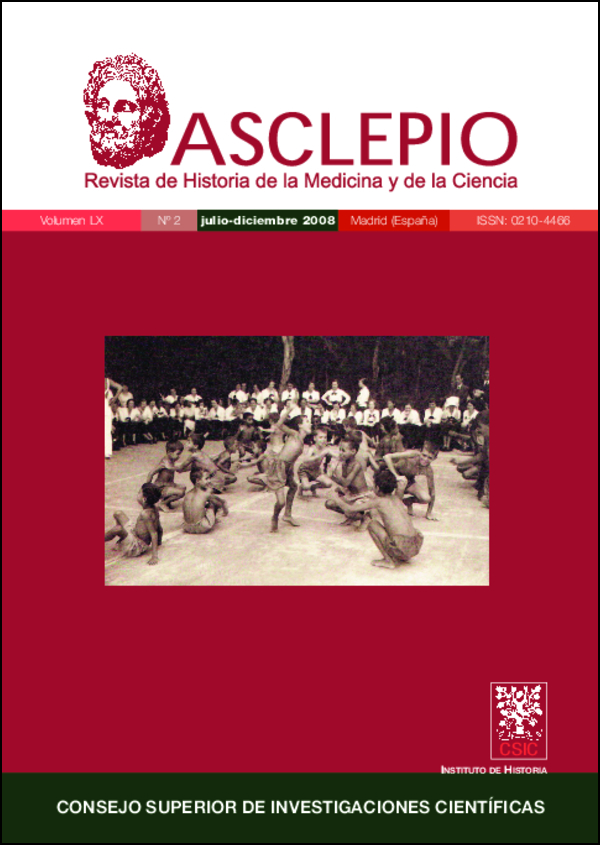The wind prophylaxis. Repressive and sanitary institutions in argentina’s Patagonia, 1880-1940
DOI:
https://doi.org/10.3989/asclepio.2008.v60.i2.263Keywords:
Argentina, 1880-1940, Social control, Territorios Nacionales, Health systemAbstract
This article focuses on the study of some social control technologies and discourses, displayed in Argentina’s provinces between 1880 and 1940, with particular reference to the so-called ‘Territorios Nacionales’ of La Pampa, Río Negro and Neuquén, which were submitted to a direct federal authority. The main purpose is to analyze —within these areas— the building of repressive and sanitary institutions (i. e., police, prisons, asylums, hospitals) as well as the enforcement of positivists studying and classifying methodologies, intended to identify ‘abnormality’. A straight and permanent rule of these ‘Territorios Nacionales’ on the federal State could have meant a longer attention to their social and economic development through a direct and intense presence of national, modernizing, positivist institutions. However, a deeper historical study of repressive and sanitary institutions allows to arrive to completely different conclusions. The sources show that these institutions had numerous daily problems, were frequently and severely under-budgeted, and were obliged to develop not originally foreseen functions and tasks. These situations imply revising not only these institutions’ real regulation capacities but also the very existence of a generalized, efficient social control programme in Argentina at the beginning of the 20th century, as many scholars focused on Buenos Aires’s study case have already argued.
Downloads
Downloads
Published
How to Cite
Issue
Section
License
Copyright (c) 2008 Consejo Superior de Investigaciones Científicas (CSIC)

This work is licensed under a Creative Commons Attribution 4.0 International License.
© CSIC. Manuscripts published in both the print and online versions of this journal are the property of the Consejo Superior de Investigaciones Científicas, and quoting this source is a requirement for any partial or full reproduction.
All contents of this electronic edition, except where otherwise noted, are distributed under a Creative Commons Attribution 4.0 International (CC BY 4.0) licence. You may read the basic information and the legal text of the licence. The indication of the CC BY 4.0 licence must be expressly stated in this way when necessary.
Self-archiving in repositories, personal webpages or similar, of any version other than the final version of the work produced by the publisher, is not allowed.















